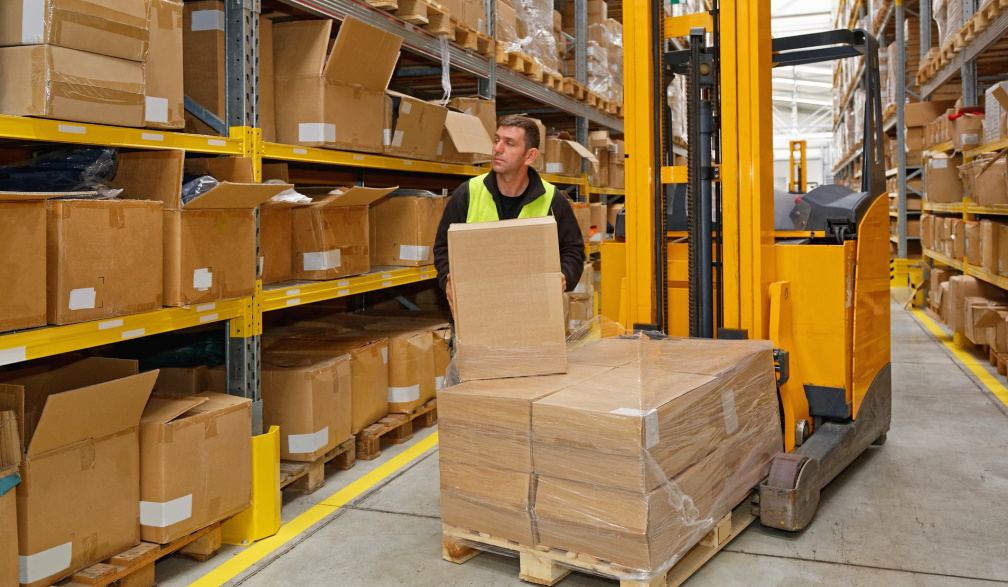How A Warehouse Management System Can Boost Your Fulfillment Strategy

Retailers have adopted e-commerce sites to sell their goods as more people shop online. Customers can now do it in the comforts of their home, take advantage of online vouchers or discounts, and wait for their package to arrive.
But shopping online has its disadvantages as well. In a report by the New York Times, about 15% of the deliveries never make it to the customers due to theft, logistical issues, or packages delivered to the wrong house.
Fraud is another issue concerning online shopping as well. Thieves see this as an opportunity to scam people into buying items that don't exist.
Despite these problems, retailers are always looking to streamline the fulfilment process, leverage new technologies like a warehouse management system, and ensure customers get what they purchase online.
What Is A Warehouse Management System?
A warehouse management system (WMS) involves processes and principles in operating a warehouse. It includes systems in receiving and delivering packages, scheduling the workforce, and managing the inventory.
An effective WMS ensures the smooth operation of the warehouse while maintaining a cost-effective method for the company.
A Brief History Of WMS
Warehouse management dates back to as early as ancient times. The Egyptians are looking for ways to manage their crops better. They maintain a record through papyrus to prevent famine in times of drought.
During the 19th century, warehouses used the railroad system to transport their goods, especially long distances. Although they've used the railroad system, hauling the goods from the warehouse to the trains is done by hand.
After World War, warehouses began using trucks to move goods easier. Aside from using trucks, they managed their inventory better by using forklifts and wooden pallets for bulk cataloguing. They can reference a pallet number to retrieve a specific good.
At present, warehouses have developed their management system through computers and conveyor belts to better keep up with the demand. They also use Software-as-a-Service (SaaS) application so that major stakeholders can monitor the status anywhere via the internet.
Benefits Of Using WMS
Companies can leverage the use of WMS as it improves the workflow of the supply chain process, thus strengthening the relationship between the suppliers and the customers.
Another benefit of using WMS is different departments can integrate with the system for efficiency. For example, the accounting department can tap into the reporting system of WMS so that they can invoice the products correctly. The delivery department can integrate with WMS to deliver the products effectively.
Other benefits of using WMS include:
- 1. Better Labor
Since warehouses are huge and travel time can hamper a worker, WMS can effectively assign tasks to the right workers based on their skills and proximity.
Warehouses can also use robots to work on repetitive tasks like transporting goods to another department in the warehouse, while workers can work on other tasks.
- 2. Accurate Inventory And Better Space Utilization
Since warehouses use pallets to transport goods, they can reference the pallet number and its location in the warehouse. When a customer orders a specific product, the WMS can reference the pallet number to retrieve the correct product from the inventory.
WMS can also help with space utilization since warehouses can use material rotation methods like first-in, first-out, first-in, last-out, or first-expired, first-out. For example, WMS can prioritize perishable goods that expire when picking.
WMS can make adjustments to maintain inventory location, manage movement across the floor, and improve workers' performance.
- 3. Supply Chain Visibility
WMS can increase supply chain visibility and promotes transparency since personnel can monitor the status of the goods from production, retrieval, and shipment. Customers can also monitor their orders from purchase to delivery.
- 4. Room For Growth
Companies can reference the reporting and analytics feature of WMS to address bottlenecks. They can also add key performance indicators (KPI) to improve their processes further and exceed compliance regulations.
Industries That Use WMS
While there are a lot of companies that offer warehouse solutions, like Systems Applications and Products (SAP) and Microsoft, the following industries highly use WMS:
- 1. Manufacturing
The manufacturing industry has the most complicated management system since they need to track from raw materials to a finished product and maintain accurate inventory. But, through WMS, they can determine the bottleneck and improve the production line.
- 2. Retail
The retail industry uses WMS to keep up with customers' demands. It also promotes transparency since customers can track their order status and expect delivery.
WMS also helps the retail industry keep accurate inventory since companies transfer goods from one warehouse to another.
- 3. Food And Beverage
WMS helps the food and beverage sector through material rotation. The system keeps track of perishable goods. It can also prioritize certain goods when choosing items based on category.
Final Words
WMS can significantly help companies and warehouses with their fulfillment strategies. It can streamline the process through proper space utilization, accurate track of inventory, and implementing various methods in material rotation. Even though companies continue to improve their supply chain efficiency, delivery companies should also address the issues regarding deliveries.

g







